Hedging against a crypto crash means aligning strategy with your time horizon: for long-term holders, staying put often outperforms active hedges; for traders, using options, short futures, or stablecoin allocations can limit downside. Monitor funding, open interest and sentiment to time defensive moves.
Published: 14 October 2025 | Updated: 14 October 2025 | By COINOTAG
-
HODLers may not need to hedge
-
Short-term traders can use options and reduced leverage to manage downside risk
-
Market signals: Crypto Fear & Greed Index (24 on 12 Oct), negative funding on 11 Oct, and a 2.37% OI drop highlight elevated short-term risk
hedge against a crypto crash: Practical, data-driven guidance and options-backed strategies for traders and holders — read COINOTAG’s actionable checklist now.
How should you hedge against a crypto crash?
Hedge against a crypto crash by matching tools to your investment horizon: long-term holders often benefit most from doing nothing, while active traders should reduce leverage, consider protective options or short positions, and allocate to stablecoins to preserve capital in volatile periods.
What indicators should trigger hedging actions?
Key indicators to monitor are sentiment (Crypto Fear & Greed Index), funding rates, open interest (OI) and Put/Call ratios. On 12 October the Crypto Fear & Greed Index touched 24, signaling deep fear. Funding rates turned negative on 11 October before recovering. Coinalyze reported an OI drop of 2.37% after a BTC rejection at local supply on 12 October. These readings together suggest elevated short-term downside risk and the need for defensive positioning for traders.
Source: Alternative.me
In the 12 hours before the time of writing, Bitcoin (BTC) fell 4.51%, from $115.8k to $110.6k. Traders who entered leveraged long positions during the run toward $116k–$117k faced rapid deleveraging during the pullback.
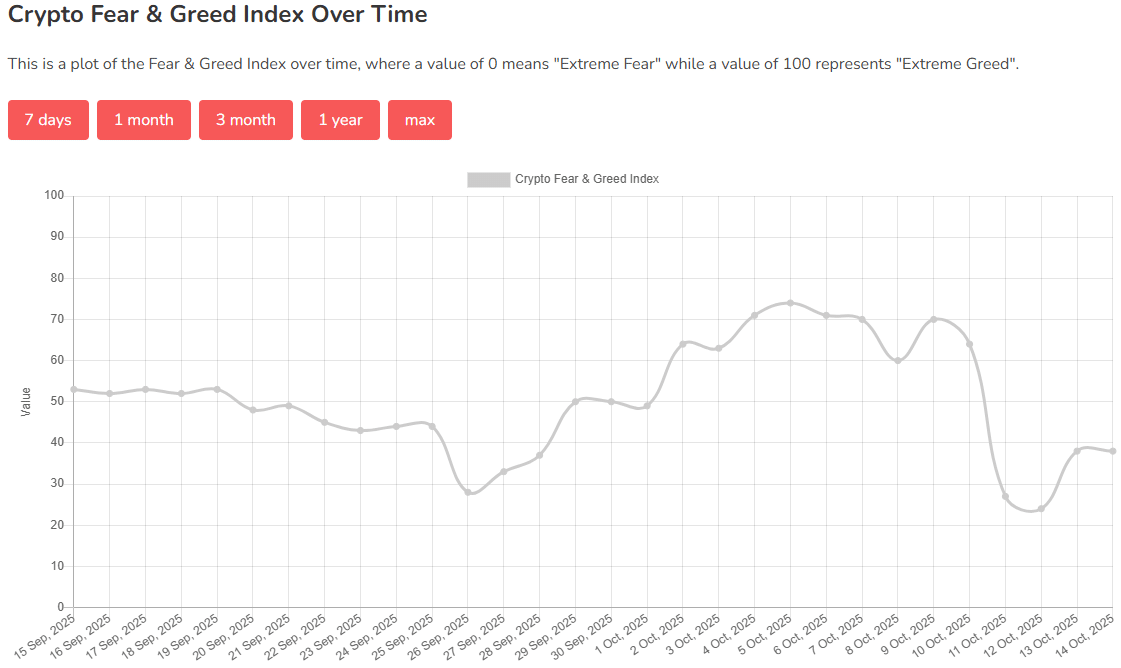
Source: Alternative.me
Should traders be hedging now?
Short-term traders should consider hedging because speculative interest cooled: ETF flows were negative on Monday and the estimated leverage ratio fell sharply after a rapid OI decline. Glassnode data shows NUPL remained above 0.5, indicating holders are still, on average, in profit — a mid-stage bull characteristic — but that does not remove short-term downside risk for traders using leverage.
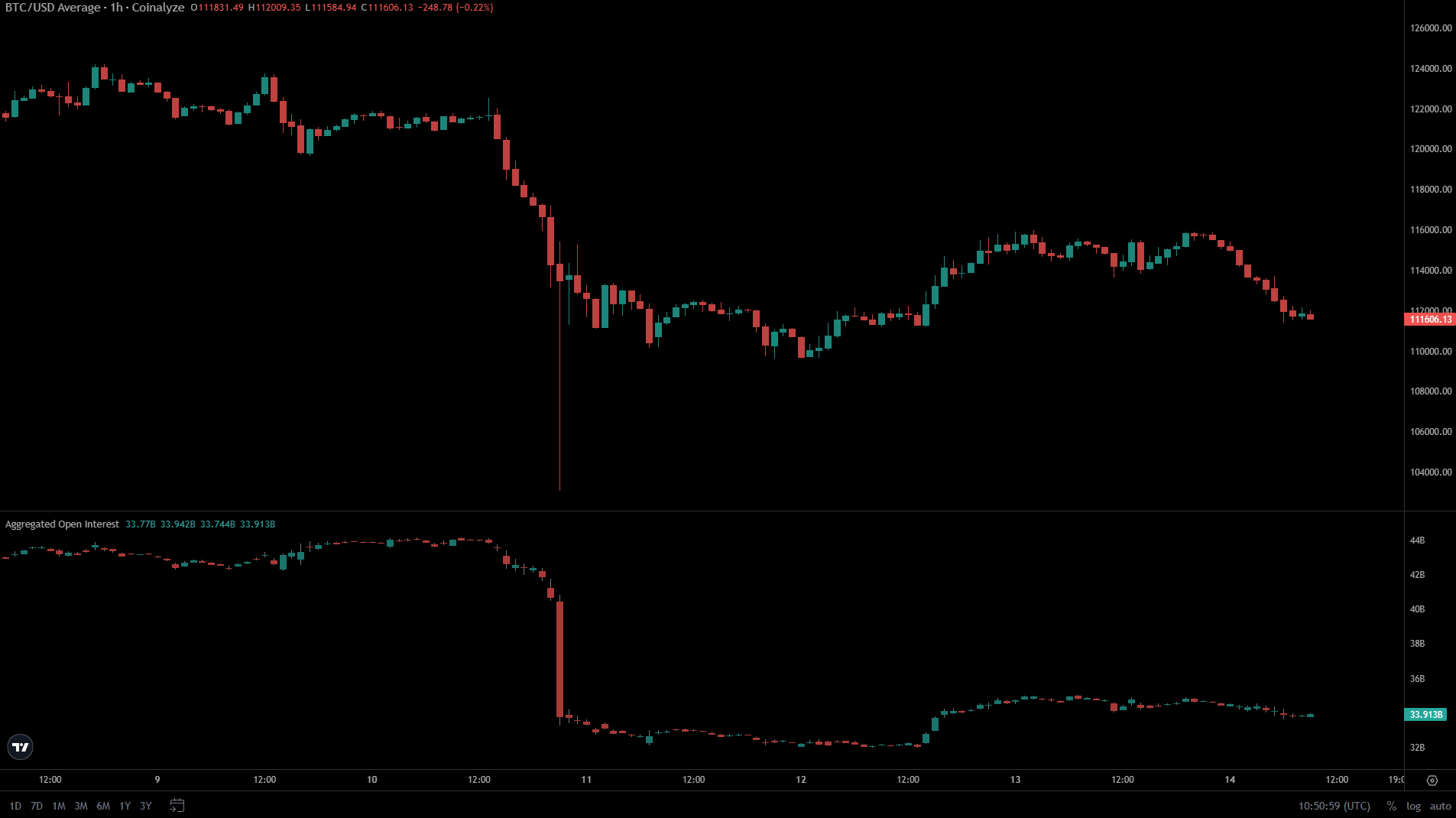
Source: Coinalyze
Options-market data also shifted intraday: OKEX recorded a BTC Put/Call Ratio near 1.05 on 11 October (higher hedging demand) that fell to 0.9 as call buying resumed. That flip indicates some traders moved from defensive to speculative positioning within days.
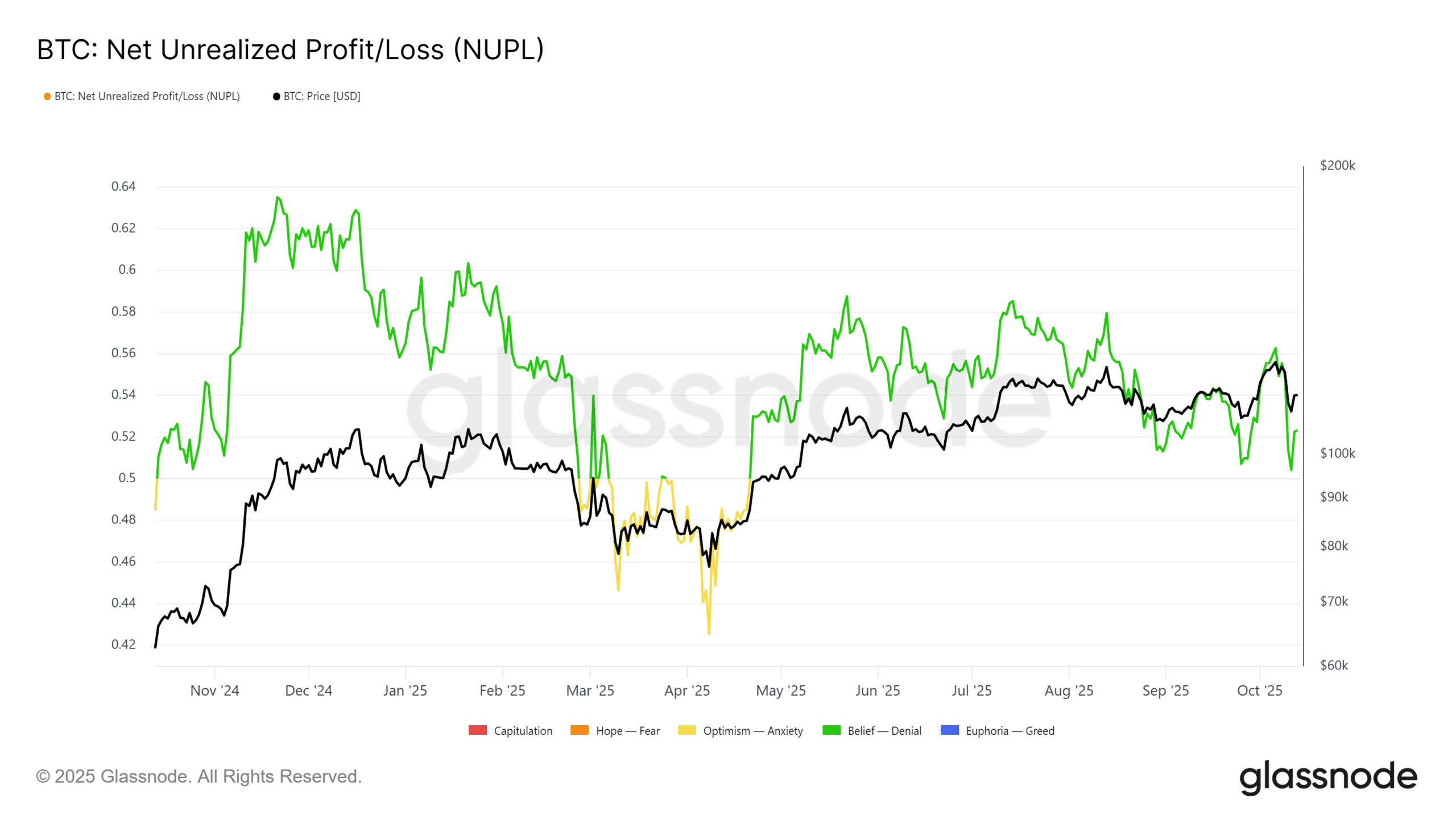
Source: Glassnode
Practical hedging options for traders
1) Protective puts or collar strategies in options markets to cap downside while retaining upside. 2) Short futures with strict stop-loss rules to limit blowups. 3) Increase stablecoin allocation or cash to reduce portfolio beta. 4) Reduce leverage and avoid chasing breaks of key support zones such as $100k–$102k.
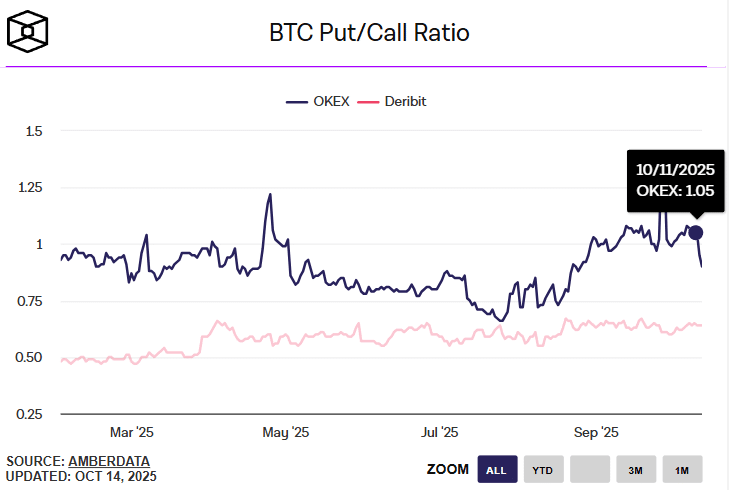
Source: Amberdata
The estimated leverage ratio drop reported by Glassnode is consistent with forced deleveraging after heavy liquidations, and reflects a temporary reduction in risk appetite across futures desks.
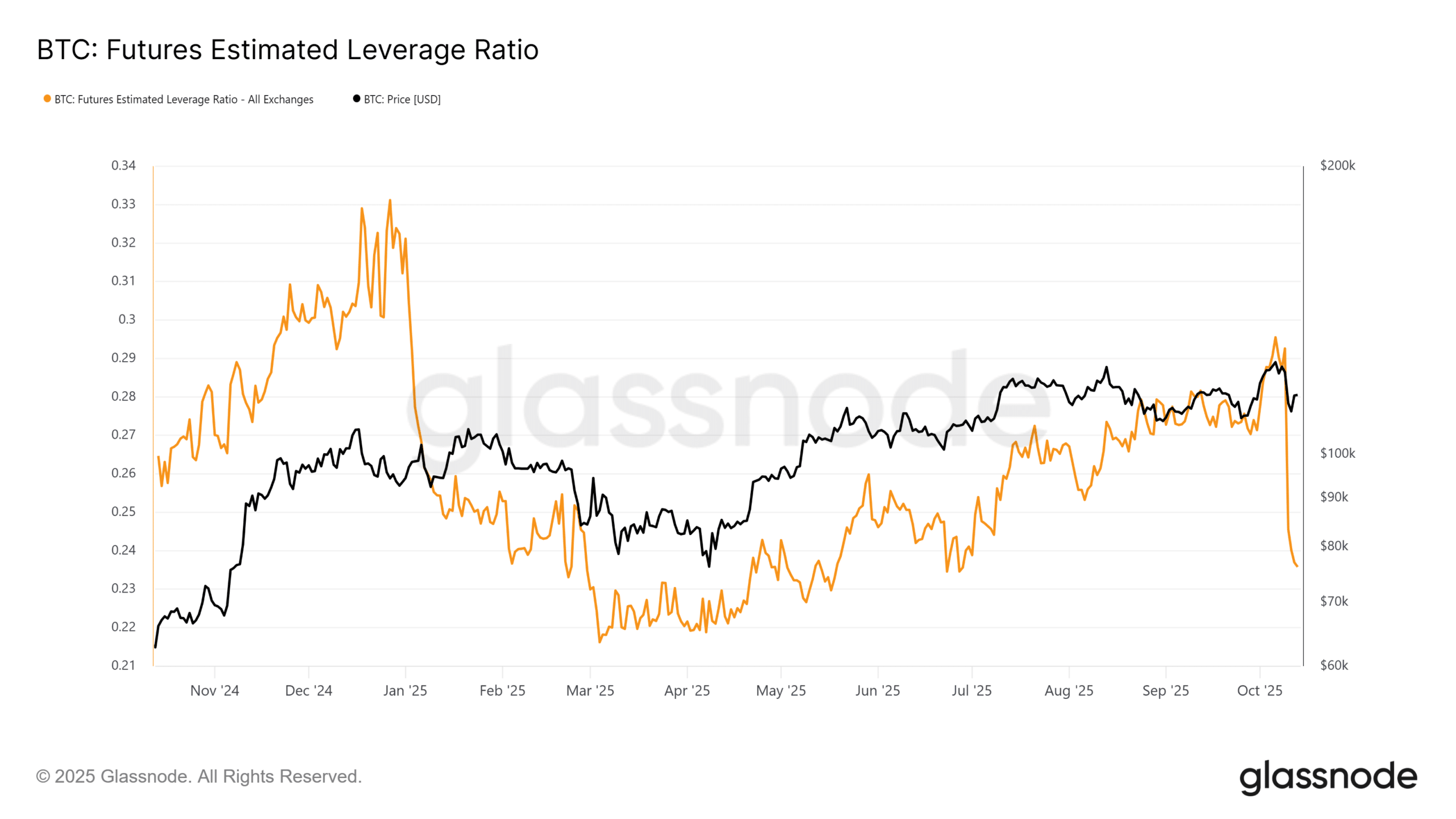
Source: Glassnode
Frequently Asked Questions
Should long-term Bitcoin investors hedge during a correction?
Long-term investors typically do not need active hedges; historical performance shows time-in-market can outperform tactical hedging. If you lack conviction or require liquidity within a short horizon, consider partial hedging or allocating a portion to stablecoins. (40–50 words)
How can I hedge quickly if volatility spikes?
For immediate protection, buy protective put options or shift a portion of holdings into high-quality stablecoins. Keep leverage minimal and use predefined stop-losses. Voice-friendly: “Buy a protective put or move part of my portfolio to stablecoins and lower leverage.”
Key Takeaways
- Time horizon matters: Long-term holders may prefer to hold; traders should hedge.
- Watch leading indicators: Fear & Greed Index, funding rates, OI and Put/Call ratios provide actionable signals.
- Use appropriate tools: Options, reduced leverage, stablecoins and clear risk limits are practical hedges.
Conclusion
Deciding whether to hedge against a crypto crash depends on position size, leverage and time horizon. Data from Alternative.me, Coinalyze, Glassnode and Amberdata indicate elevated short-term risk but continued mid-stage bullish conviction among holders. Traders should prioritize capital preservation with targeted hedges; long-term investors may maintain positions. For ongoing coverage and data-driven analysis, follow COINOTAG for updates and strategy notes.
Expert comment: “HODLing remains the optimal approach for many long-term investors; for active traders, measured use of options and disciplined leverage controls are essential,” says a COINOTAG research analyst.
